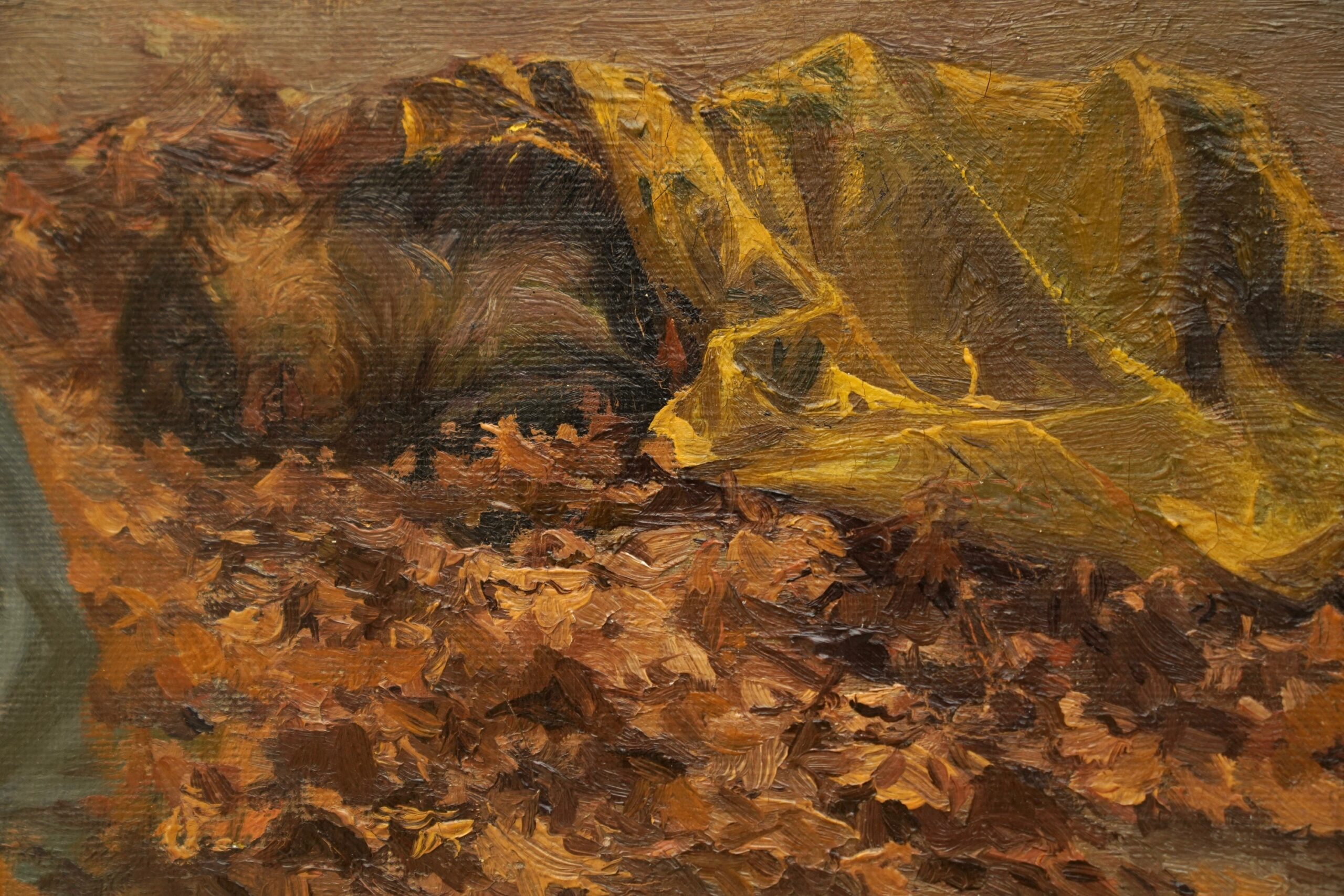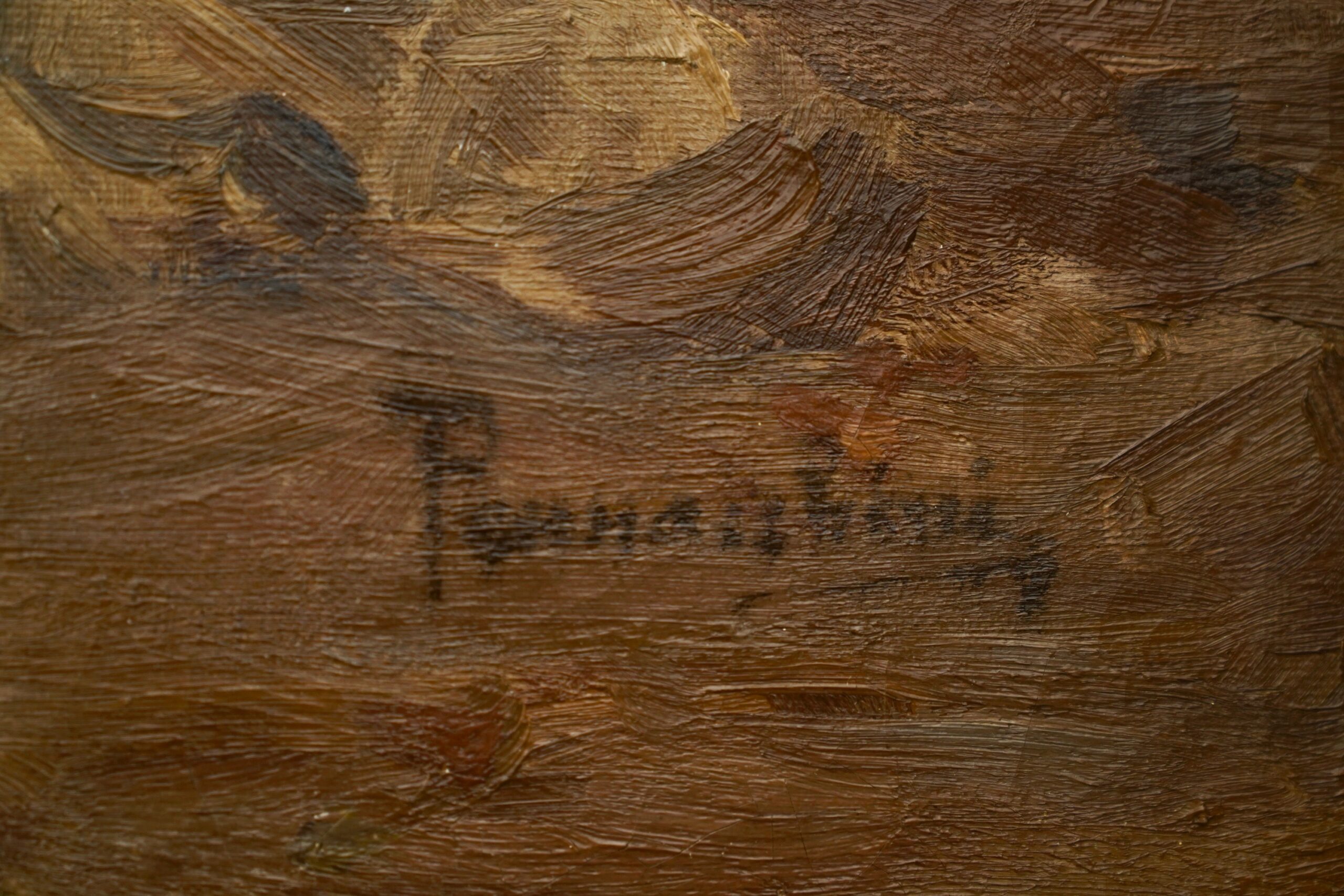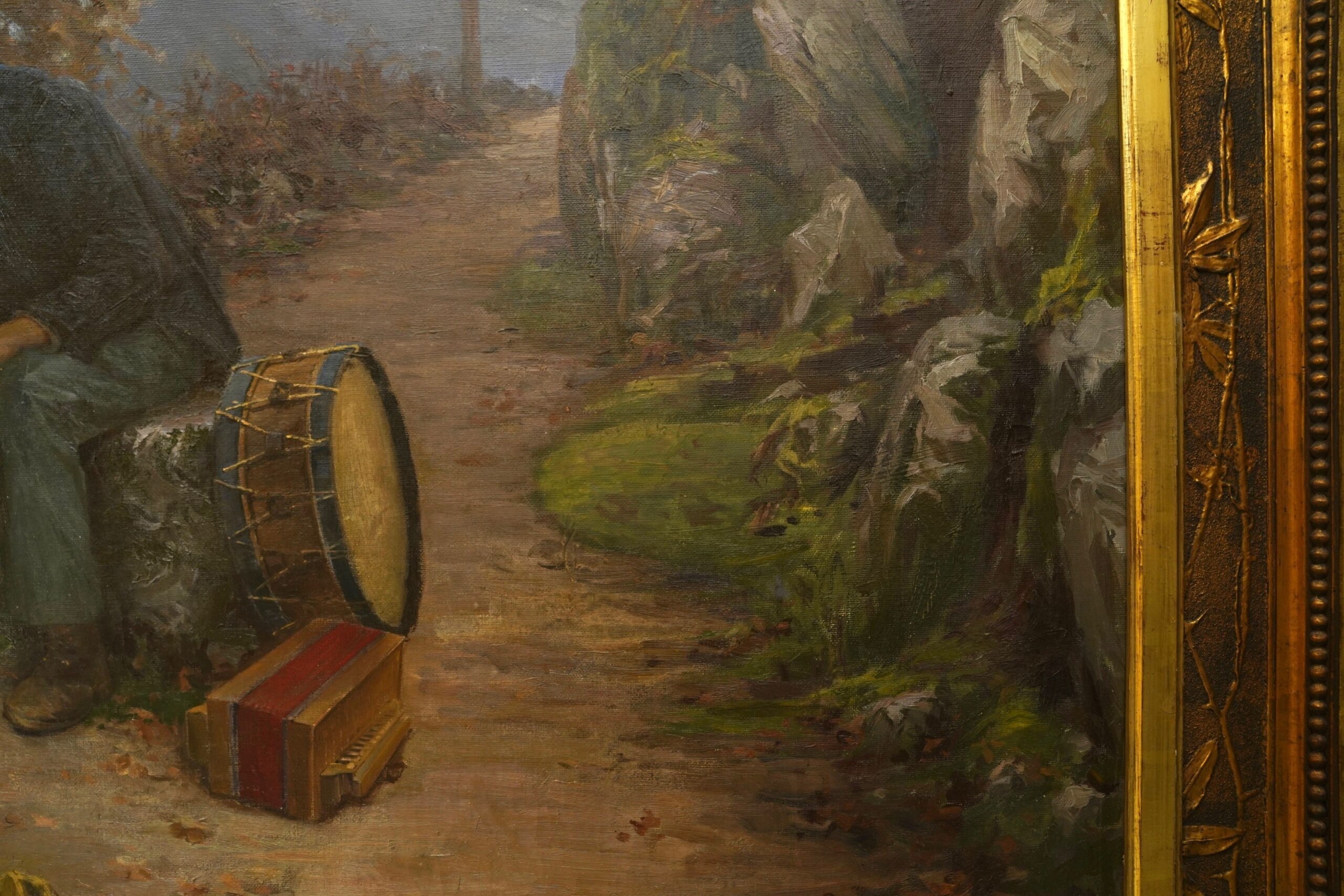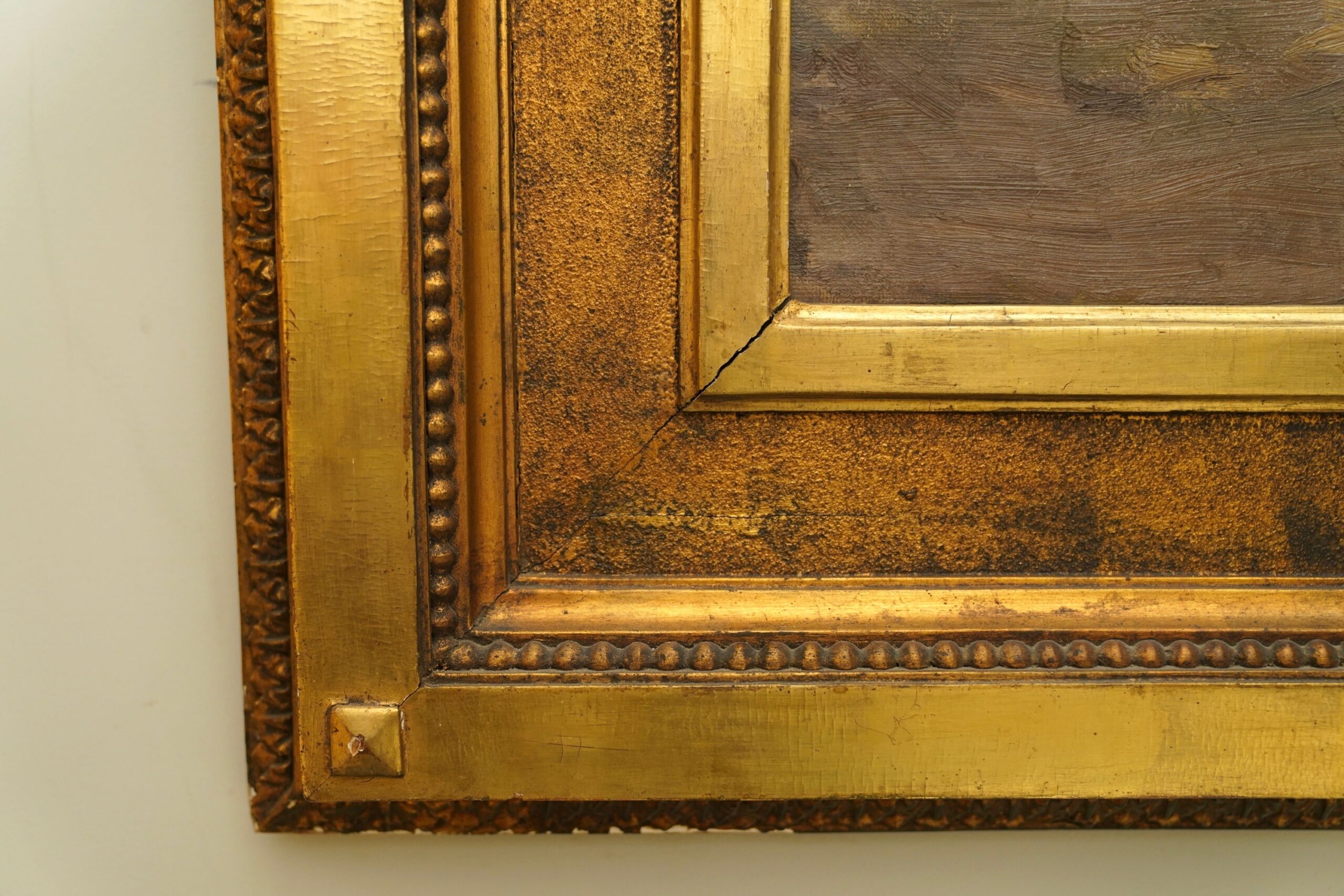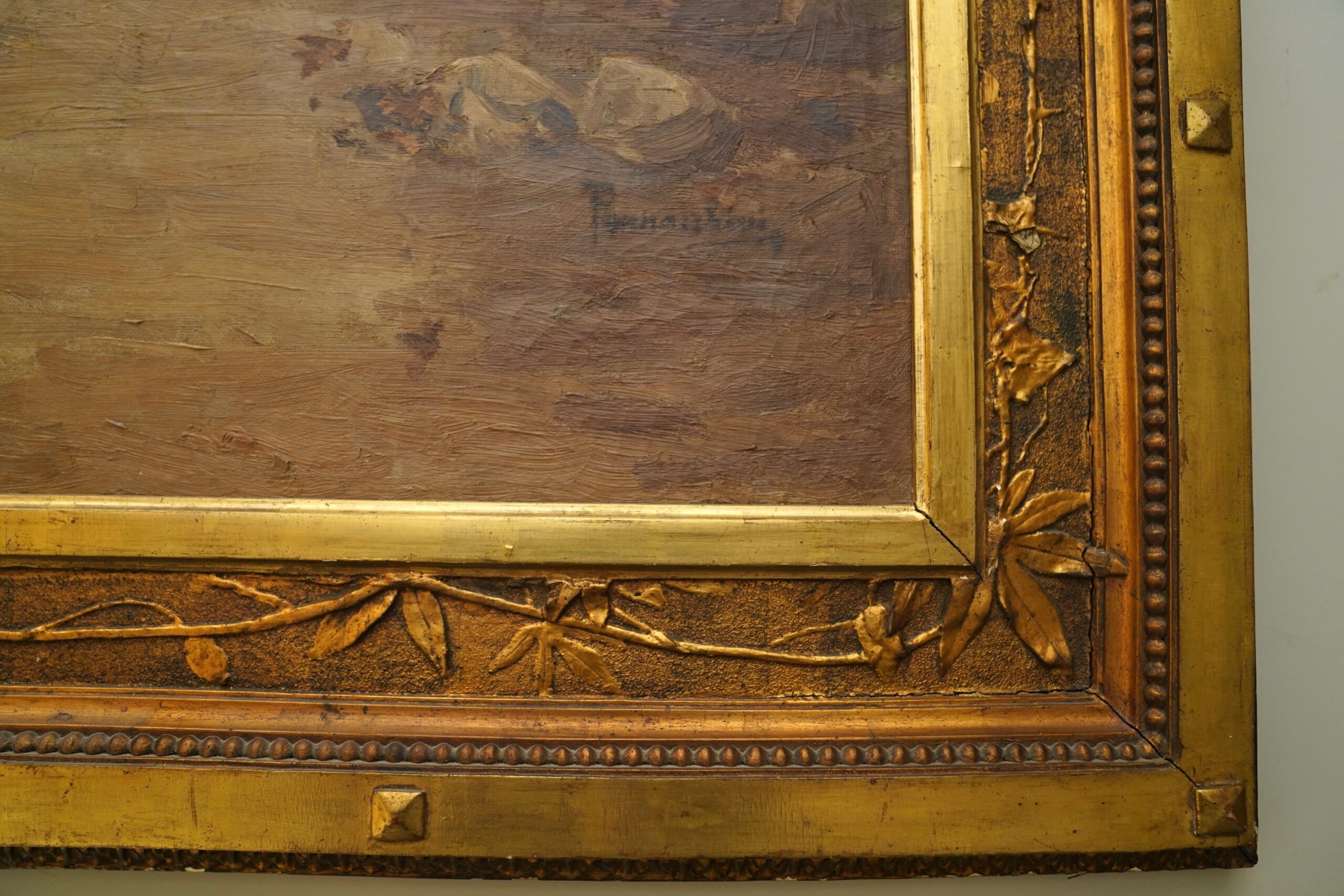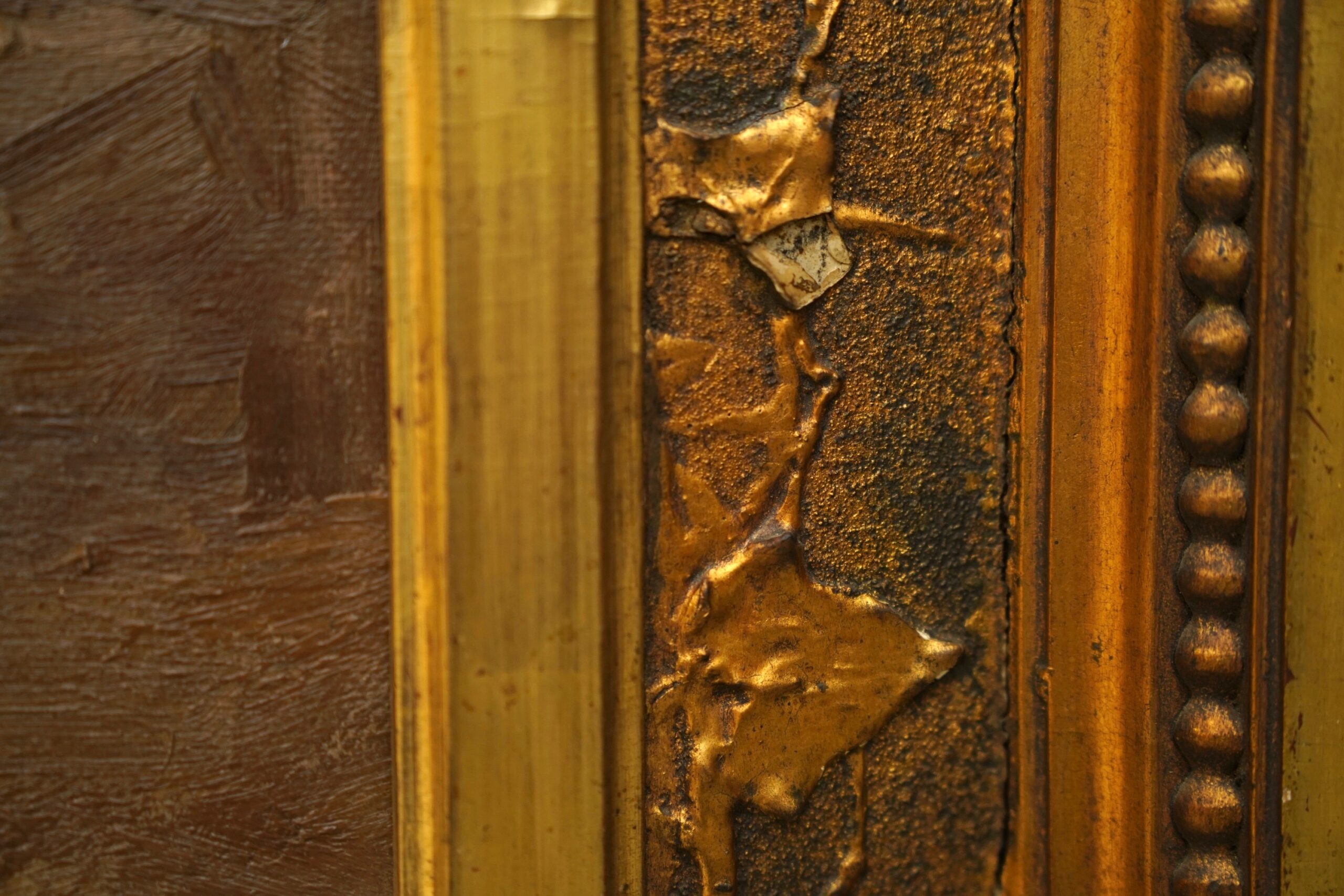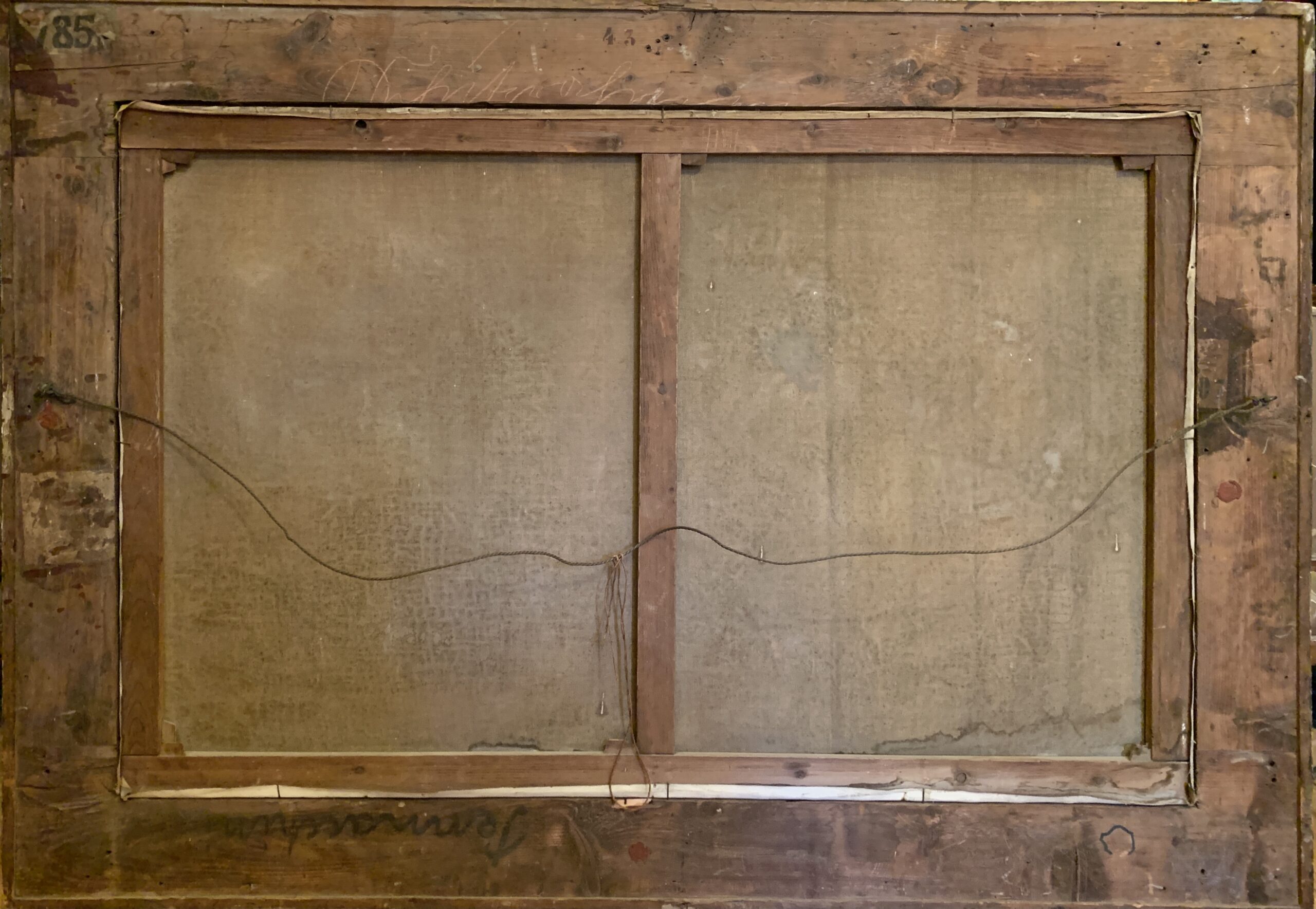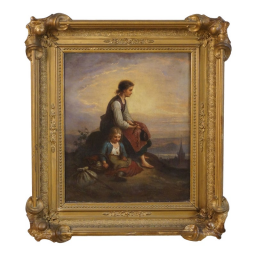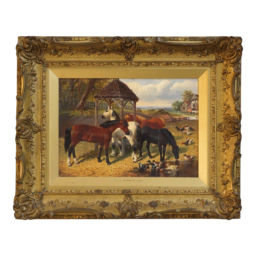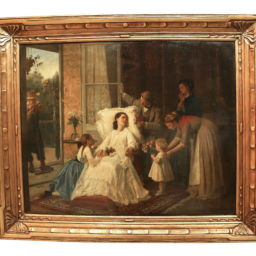Description
Domenico Pennacchietti (Italian 1865-1910). A native of Rome, who was influenced by Augusto Corelli (Italian 1853-1918). Pennacchietti’s work shows the influence of the Roman school and the philosophy of humanism.
During this time, in which societies of Europe and England were attempting to popularize different forms of charity as it related to poverty and labor, “Dead Monkey” was produced. This provocative work of art is an example of the dissemination taking place in art and literature, that expressed the need for an economic support system for those less fortunate. Created in the latter part of his life, this piece was considered an evolutionary masterpiece.
This oil painting depicts a father and a daughter mourning the loss of a little monkey. The two subjects are, on what appears to be a trail on a rocky side of a mountain as if they are traveling performers. The woman appears to be mourning the loss of her pet whereas the man appears to be worried about their future livelihood. Due to the themes of loss and grief, the artist utilizes a somber color palette. The dead leaves of fall reflect their loss along with the white cloth used to cover the dead monkey, thus symbolizing the sanctity of paying respect to the life that was lived.
Pennacchietti was a respected member of Venticinque Della Campagna Romana (Twenty-five of the Roman Country) and was an adviser to the Circolo Artistico and Cultori di Roma (the Circle of Art and Culture of Rome). His works are present in numerous collections and in private and public collections.
Information about this artist can be found in Benezit 1975, Pittori & Pintura dell’ottocento Italian 1998, Dizionario dei Pittori Italiana 1928, Thieme U. Becker Kunstlerlexicon 1939, Dizionario Enciclopedico Bolaffi Dei Pittori e Degli Incisori Italiani 1972 .
Canvas only: Height= 39 in. Width= 61 in.
With original gilt frame: Height= 51.5 in. Width= 73.5 in. Depth= 3 in. Weight= 40 lbs.




